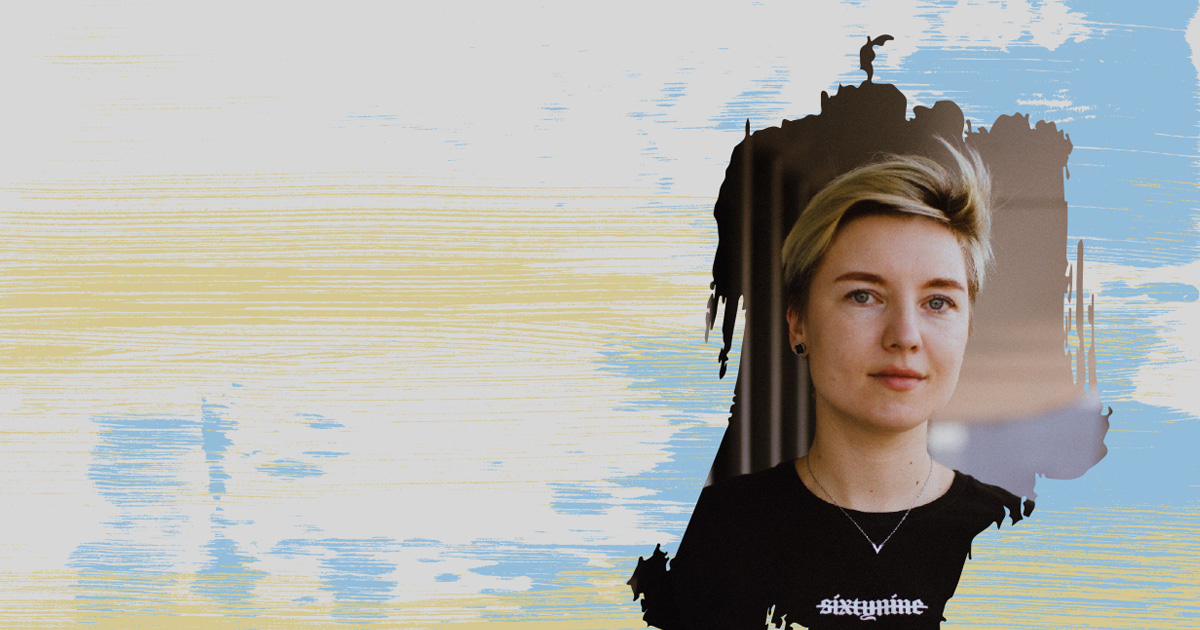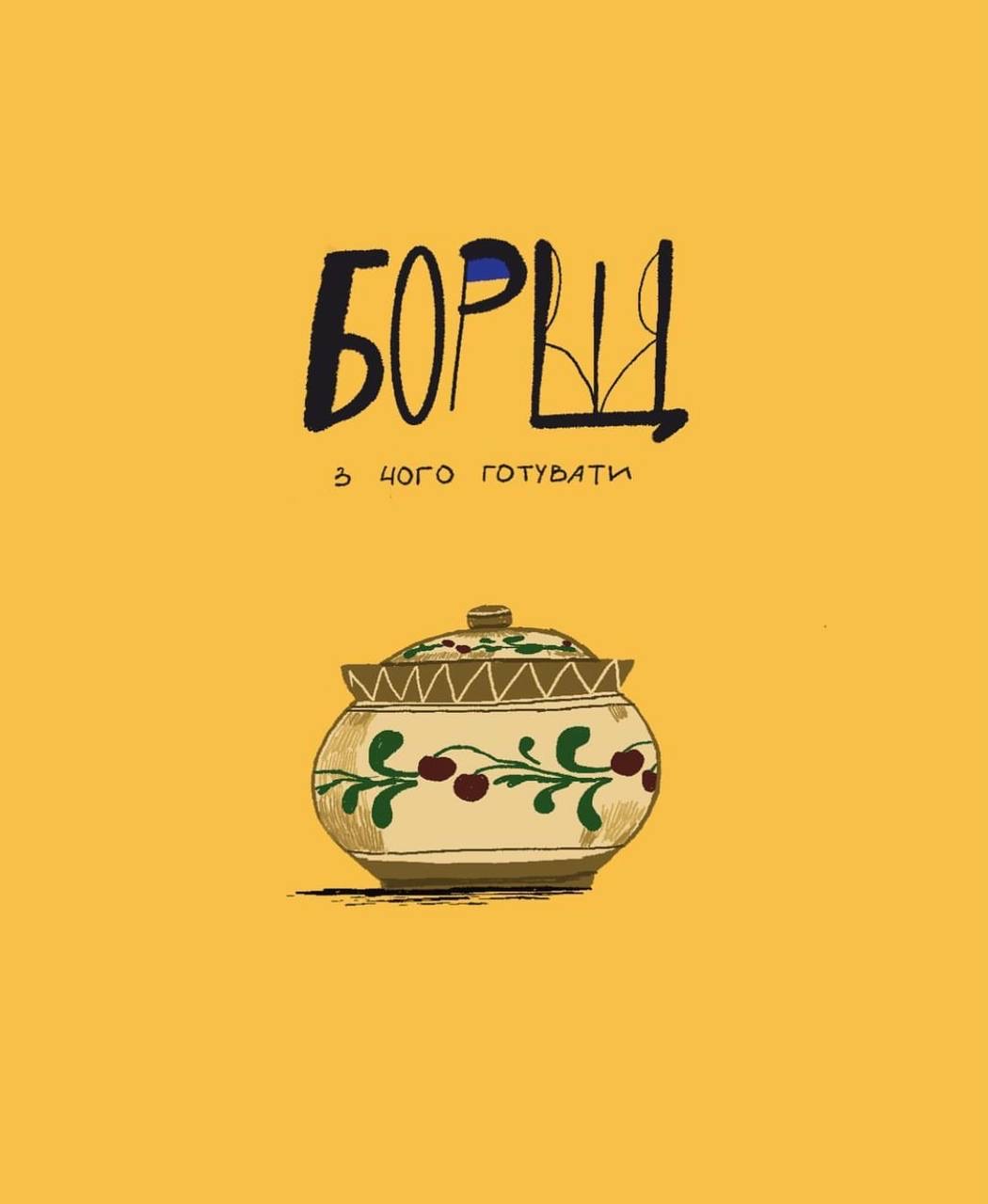Artists Against War: The Visual Language of War. An Interview with Daryna Klochko

Svidomi in collaboration with Artists Against War, an online gallery of posters created to support Ukraine after the Russian full-scale invasion, tell the stories of the artists who help Ukraine by means of art. Read an interview with the designer Daryna Klochko in the carousel.
— What was your main activity before February 24?
—I was designing interfaces of applications and websites — this is still my main job. I am a freelancer, but I work with various design studios on an ongoing basis, and last year it was Snig.digital. In addition, I create illustrations: partly as a hobby, though sometimes it reaches a professional level.
— Did you think that there could be a full-scale invasion?
— I was following the news and felt some tension about the invasion, but for a long time I was sure that it was “muscle flexing” and there would be no such large-scale escalation.
I have a little child, and for a long time my husband and I had been planning a vacation for two in the Carpathians. The day before the invasion, I took my child to my parents in Kharkiv. On February 24, I was supposed to go back to Kyiv, and then travel to Bukovel. My mother woke me up. At first, I thought she was worried that I could be late for the train, but my mother said that “it has started”, and we could hear explosions. There was panic in Kharkiv, there were traffic jams and queues everywhere, you couldn’t get a taxi. So I took my child, we went to Kyiv and have been here all the time since then.
— When did you start drawing again?
— Almost immediately. The first days were an absolute confusion, but I needed to let my feelings go — to post and say something. It seemed to me that all the feelings should be converted into comprehensible messages and images, because otherwise I would either feel worse because of accumulated emotions, or the moment would pass and remain unrecorded.
My creative Instagram account was half-dead; I occasionally posted something there. I considered it to be my private album. In general, this account still is my private album, but after February 24, the need to draw something grew bigger — it was a kind of private therapy.
At a certain point, I noticed that there was some feedback — my drawings were shared, and they received a lot of comments. Then I realized that I needed to take responsibility and not just record thoughts in the form of a picture, but to make illustrations important and meaningful. Everything was based on feelings. In the beginning, I addressed the global society, the Russian society; later I realized that it is much more important to support Ukrainians in order to feel strength and unity.
— Have you noticed any feedback from people from other countries?
— Yes, certainly. At that time, there was a massive interest in everything connected with Ukraine. My pictures, which I believed to be of no interest to anyone, have become the focus of attention. My Instagram profile statistics showed a huge rise.
— How has your activity changed after the beginning of the full-scale invasion?
— I started to work even more intensively in all spheres: the amounts of both illustrations and design projects got bigger.
— Please tell us more about your series of illustrations about borscht. How did the idea come about?

— Once I drew a watercolor with a beet on it. When I was going through old pictures, I remembered this one and thought that I could personalize this valiant beet and come up with an interesting phrase for it. This happened at the time when Ukrainians needed to feel unity and high morale. I wanted to be involved in this. I digitized the picture and came up with phrases: a censored and an uncensored one. My husband suggested making a whole series of such drawings, and together we came up with an idea that you can "cook" borscht with the pictures. I posted the first few “products”, saw the reaction, and it motivated me to complete the series.

— How does the eighth month of the full-scale war affect your creativity?
— At the beginning of the invasion, there was a pure reaction: when something happened, it felt like there was a spring inside me that would not relax until I reacted and drew something. Now I have the emotional ability to contemplate for a longer time on the events that are happening. I try to approach creativity in a more meaningful and careful way. The first reaction is cool, it's always an impulse, maybe it's the most correct one, but sometimes you need to add a few more layers of meanings, think about who you want to talk to and what you want to say. There are some topics on which it is better to remain silent. Now, before taking my tablet, I start exploring my thoughts about what and why I can express.
— In your opinion, what is the role of art in a war?
— For a long time I took a skeptical position on this issue. Art does not fight, art does not put an end to wars, and it is not such a strong lever to change the course of events. Of course, there are different genres and different goals of creativity, but, in general, I perceive art, first of all, as a way of psychological help, and second of all, as a tool for recording events. Unlike photography, art can capture much more contexts and emotions. In addition, it is an emotional relief for both the author and the "consumer". I like to look at other people's works, especially funny and satirical ones, and I realize that my picture can also make someone laugh; a person will feel easiness and pleasure after seeing this picture. Such a therapeutic effect, especially a humorous one, is important here and now — in order to stay strong and continue the fight.


